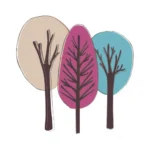 Show and Tell
Show and Tell
For the last six weeks, since Ash Wednesday, I’ve been slowly working out at the far reaches of my own competence, for the sake of learning something new. For the sake of trying a new practice and inviting your participation, I’ve explored a new discipline this Lenten season.
The practice is visio divina, and I started not with classical cultural texts (recognized visual artists for instance) but rather with pop culture music and videos. One could debate the popularity of some of my choices, but the point was to begin not with the familiar, but with the strangely unfamiliar. The point was to see what might be learned about more familiar and traditional religious belief and practice by starting somewhere else, somewhere surprising.
The main feature of the music and videos I’ve chosen is the way that they open up horizons on the sacred. Rather than make a big case about it each time, however, I’ve tried to show rather than tell. Sometimes I set the links up better than other times. Sometimes this was necessary. Other times I just put in the link and left readers to connect the dots.
Now I want to connect
a few more dots. . .
( ) What I’ve been after is a way toward healing this Lenten season.
Rather than give up sweets or meat or some daily pleasure for the sake of prayer, I’ve been reaching for a more sacramental view of healing that is available in every thing and in every place. The practice of self-denial for the sake of greater awareness of God’s presence is admirable and has a solid place among Christian traditions of spirituality. This year I chose a different path toward healing. It is a more cataphatic way: a way of naming toward the sacred horizon by means of what is already there. It seeks healing through holy imagination and vulnerable presence.
( ) In the last post on Sunday
I raised questions about passion and what it means in this Holy Week to practice passion faithfully. I suggested that bigger, badder, louder, brasher means were not the only or most adequate way to understand faithful passion. However, today I want to flip that claim to reach for something deeper.
( ) Because the popular attractions of our time are so popular
They are attracting masses into their orbit and they function like religion. They draw people into spaces in which they join vicariously in getting swept up, carried away, losing themselves passionately in the moment. So movies, rock concerts, sporting events and reality television do work which fosters loyalty and passion in ways that those of us who are intentionally seeking sacred connections based on long-standing religious traditions, ought to pay attention. What can we learn?
( ) Capturing the human condition
Put simply, these cultural events and the popular texts they generate (sound tracks, videos, movies, etc.) capture the dynamics of the human condition in such a way as to make space for an inbreaking of the sacred. Put another way the popular events and texts point beyond themselves toward a sacred horizon that is not unlike the one pointed to by traditionally religious events and texts: communal rituals, practices of worship, scripture interpretation and prayer.
( ) How exactly do such popular texts work to point us to the sacred?
There are a variety of ways that scholars try to fill in the “how” question. For me the easiest door into this question is through human relationality. Where does the sacred break into our lives? At what point do we experience grace, love, healing or calling to something greater? Within and at the edges of our relationships with others we find ourselves swept up, carried away, losing ourselves passionately in the moment. It is in human relationships that we can know and experience terror, awe, rage and grief as well as love, passion, faithful promise and sustaining hope. Deep within or at the far edges of these human experiences are the sacred inbreakings that change and move us.
( ) Many directions
The pop culture texts I have been choosing and sharing take us in many directions of feeling, experience and relational engagement. Not every one of them will appeal to all people. I chose ones that worked on several levels for my purposes. Overall, they not only capture the relational character of sacred presence, but also the embodied, emotional, vulnerable characteristics of sacred presence and healing as well.
They get at the full range of human experience and present it in a way that draws us in and returns us to ourselves somehow changed. The change is not due solely to the creativity of the artist or the structure of the art, but rather I’m suggesting the change is possible because of the “more” that is available in each text. In that way they work like icons or hyperlinks. When we approach them rightly, we can find ourselves transported to a new place, a healing place.
So now I’ve done some telling, some connecting the dots. It is time to return to showing. I’ve chosen a concert for this Holy Week, when sacred presence broke into the human experience in the person of Jesus the Christ. The intersection of passion and faithfulness in this week is complex, relational, vulnerable, full of friendship, betrayal, love, grief, and the possibility of transcendence and healing, of potential for starting over with joy.
Tiny Desk Concert by the Swell Season
May the sacred of this Holy Week break into your life and leave you changed.




